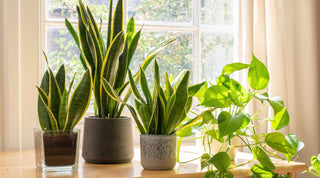Welcome to the world of edible gardening, where the joy of growing your own food meets the satisfaction of a healthy lifestyle.
Whether you're a city dweller with a small balcony or a suburbanite with a spacious backyard, the art of cultivating your own fruits and vegetables is both rewarding and nourishing. In this post, we'll explore the essentials of starting and maintaining an edible garden.

Why Edible Gardening?
Edible gardening goes beyond the simple act of planting; it's about connecting with nature, understanding the source of your food, and enjoying the freshest produce possible. It's also an excellent way to reduce your carbon footprint and ensure you're eating wholesome, pesticide-free produce.
Getting Started: Choosing Your Crops
The first step in your edible gardening journey is to decide what to grow. Consider your local climate, the amount of sunlight your garden receives, and your personal taste preferences. Start with easy-to-grow crops like tomatoes, lettuce, herbs, and strawberries. These plants are beginner-friendly and offer a quick and gratifying harvest.
Soil Preparation and Planting
Good soil is the foundation of a successful garden. Enrich your soil with organic compost to provide the necessary nutrients. When planting, give each plant enough space to grow, and follow the guidelines for planting depths and spacing.
Watering and Mulching
Regular watering is crucial, especially during the dry months. Mulching helps retain soil moisture and suppress weeds. Use organic mulch like straw or grass clippings, which also adds nutrients to the soil as it decomposes.
Pest and Disease Management
Edible gardens can attract pests and diseases. Combat these challenges naturally by encouraging beneficial insects, using organic pesticides, and practicing crop rotation. Companion planting can also play a vital role in natural pest control.
Harvesting Your Produce
The most rewarding part of edible gardening is harvesting. Pick your vegetables and fruits when they are ripe for the best flavor. Regular harvesting often encourages more production.
Maximizing Your Space: Vertical and Container Gardening
Not all edible gardens require a large space. Vertical gardening and container gardening are excellent solutions for small spaces. Grow climbing plants like peas and cucumbers on trellises, and use pots or planters for herbs and compact vegetable varieties.
The Joy of Growing Herbs
Herbs are some of the easiest plants to grow and can be used in a variety of dishes. Start with basics like basil, parsley, cilantro, and mint. They can be grown in small containers on a windowsill, balcony, or interspersed within your vegetable garden. Herbs add flavor to your meals and have numerous health benefits.
Organic Gardening Practices
Embrace organic gardening practices to ensure your edible garden is both sustainable and healthy. Avoid chemical fertilizers and pesticides. Instead, opt for organic alternatives and natural methods like composting to enrich your soil. This approach protects the environment and results in healthier, more flavorful produce.
Seasonal Gardening
Understanding the seasons is key to a successful edible garden. Some crops thrive in cool weather, like lettuce and peas, while others, like tomatoes and peppers, require warmer temperatures. Plan your planting schedule according to the seasonal needs of your crops to ensure a year-round harvest.
Community and Sharing
One of the joys of edible gardening is sharing your harvest with friends, family, and community. Consider donating excess produce to local food banks or organizing community gardening events. Gardening is a wonderful way to connect with others and share the bounty of your labor.
Educational Benefits
Gardening is an educational journey. You'll learn about different plant species, their growth cycles, and the ecosystems they create. This continuous learning experience is one of the most rewarding aspects of edible gardening.
Conclusion
Edible gardening is an enriching and fulfilling hobby that benefits your health, environment, and community. Whether you're growing a few herbs on your windowsill or a full-fledged vegetable garden in your backyard, the rewards of cultivating your own food are immeasurable. So, roll up your sleeves, get your hands dirty, and enjoy the journey of growing your own delicious, healthy food right at home.



